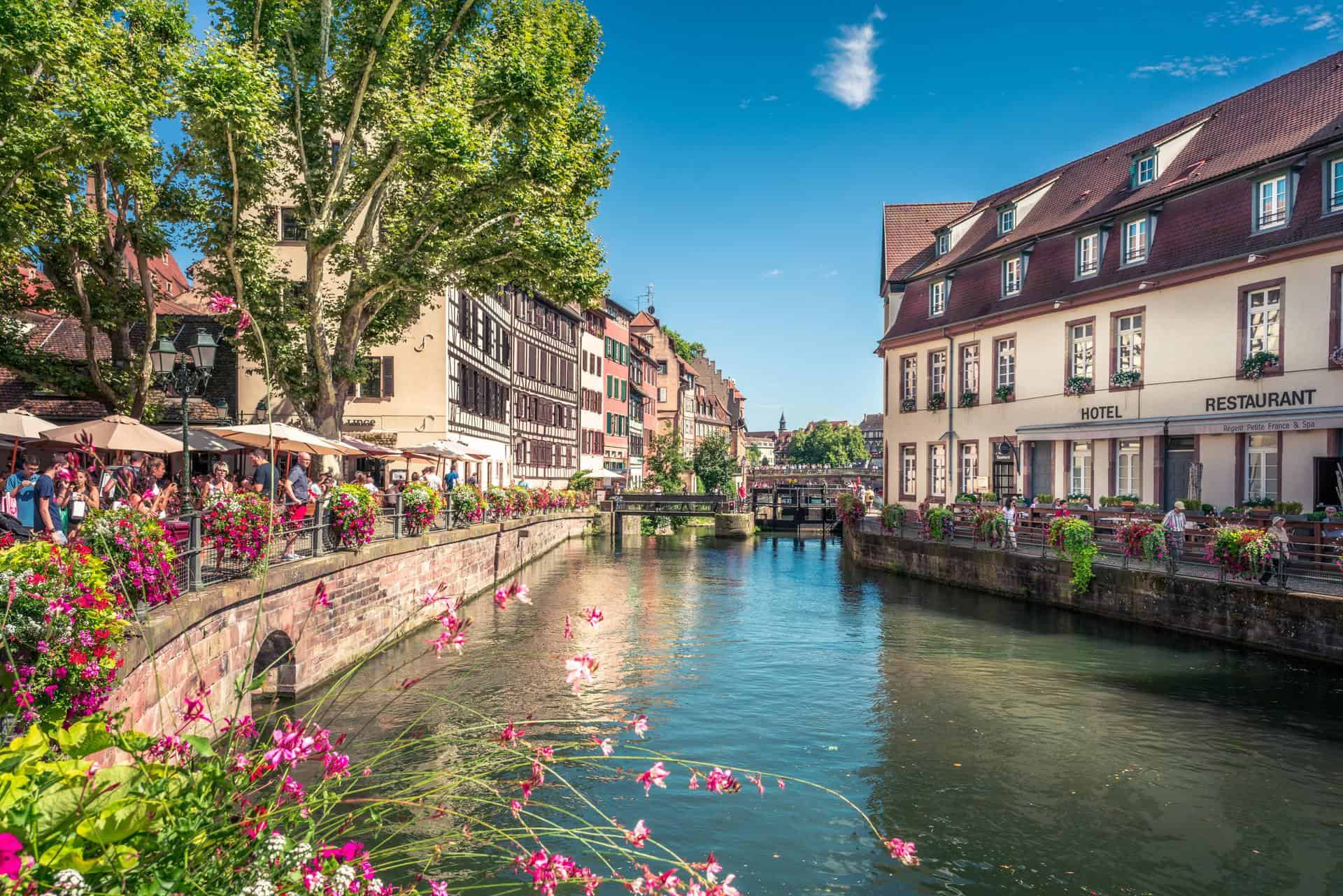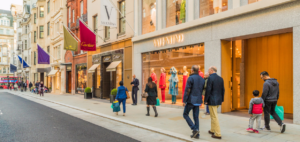Discover Strasbourg City, France

Updated On: April 23, 2024 by Ahmed Samir
Strasbourg, an enchanting city in the northeastern corner of France, beckons travellers with its allure of history, culture, and architectural splendour. Situated along the serene banks of the Rhine River and within arm’s reach of the German border, Strasbourg stands as a testament to Europe’s intricate tapestry of diversity. This article explores the city comprehensively, unveiling its profound historical roots, vibrant cultural tapestry, and unique attractions. With a history spanning over 1,500 years, Strasbourg has evolved into a captivating destination that beautifully melds French and German influences, offering an enriching experience that captures the essence of Europe’s storied past and dynamic present.
Geography and Location
Strasbourg, the capital of the Grand Est region in France, is strategically situated along the banks of the Rhine River, just a stone’s throw away from the German border. Its location has been pivotal in its history, as it has long been a crossroads of European cultures and trade routes. This prime position has contributed to the city’s cosmopolitan character and has made it a hub for political and cultural exchanges.
Historical Overview
- Roman Origins: Strasbourg’s history dates back to the Roman Empire when it was known as “Argentoratum.” Founded around 12 BC, this outpost along the Rhine River was a strategic military base and quickly developed into a bustling trading centre. The remnants of this Roman past can still be explored in the city, including the fascinating archaeological site, the Argentoratum Museum.
- Medieval Marvel: The Middle Ages, saw Strasbourg’s rise as a significant European commerce and culture centre. The city became a hub for the textile and tanning industries, constructing stunning half-timbered houses that still adorn the historic district of La Petite France today. The grand Gothic cathedral, Strasbourg Cathedral (Cathédrale Notre-Dame), was built during this era and stands as an architectural masterpiece that has captivated visitors for centuries.
- The French-German Tug of War: Strasbourg’s history is marked by its turbulent relationship with its neighbour, Germany. It repeatedly changed hands between the French and the Germans, shaping the city’s culture and identity. Following the Franco-Prussian War in 1871, Strasbourg became part of the German Empire, and its architecture and institutions took on a distinctly Germanic character. This period left its mark on the city, visible in the charming Alsatian houses and the German-inspired Neustadt district.
- The Twentieth Century: The 20th century brought more upheaval to Strasbourg as it witnessed two world wars. After World War I, the city returned to French control and symbolised reconciliation between France and Germany. Here, the Council of Europe and the European Parliament were established, solidifying Strasbourg’s role as a capital of European unity.
Culture and Attractions
- Strasbourg Cathedral (Cathédrale Notre-Dame): This awe-inspiring Gothic cathedral, a UNESCO World Heritage Site, is a masterpiece of medieval architecture. Its intricate façade, adorned with sculptures and intricate detailing, is a testament to the skill of the artisans of the time. Visitors can climb the cathedral’s tower for panoramic views of the city.
- La Petite France: The historic district of La Petite France is a charming neighbourhood filled with colourful half-timbered houses, narrow cobblestone streets, and scenic canals. It’s a perfect place to wander, with many cosy cafes and shops to explore. The district’s name is said to have been derived from the hospice that once cared for soldiers with syphilis, giving it a rather unique history.
- Strasbourg Museums: The city boasts a rich cultural scene with numerous museums to explore. The Strasbourg Museum of Modern and Contemporary Art (Musée d’Art Moderne et Contemporain) showcases a vast collection of modern and contemporary artworks. The Alsatian Museum (Musée Alsacien) offers insight into the region’s history and traditions, while the Historical Museum (Musée Historique) delves deep into the city’s past.
- Palais Rohan: The Palais Rohan is a magnificent palace complex that houses three museums: the Museum of Fine Arts (Musée des Beaux-Arts), the Museum of Decorative Arts (Musée des Arts Décoratifs), and the Archaeological Museum (Musée Archéologique). The palace’s architecture is a sight to behold, and the collections within provide a glimpse into the city’s cultural heritage.
- European Institutions: Strasbourg is often called the “Capital of Europe” because it is the official seat of several European institutions, including the Council of Europe and the European Parliament. Visitors can explore the European Parliament building and even attend sessions to witness European democracy in action.
Culinary Delights
All exploration of Strasbourg would only be complete with indulging in its culinary offerings. French and German traditions heavily influence the city’s cuisine, resulting in a unique fusion of flavours. Here are some must-try dishes and specialities:
- Choucroute garnie: A hearty Alsatian dish consisting of sauerkraut served with various types of sausages, smoked pork, and potatoes.
- Flammekueche (Tarte flambée): A thin, crispy pizza-like flatbread topped with crème fraîche, onions, and bacon or other toppings.
- Baeckeoffe: A traditional Alsatian stew made with marinated meat (often pork, lamb, and beef) cooked slowly with potatoes and aromatic herbs.
- Munster cheese: A pungent cheese made in the region, usually served with bread or in a tarte flambée.
- Kugelhopf: A delicious, ring-shaped cake often flavoured with almonds or dried fruits, perfect for dessert or breakfast.
Strasbourg also boasts a thriving culinary scene with numerous Michelin-starred restaurants and cosy bistros offering a wide range of gastronomic experiences.
Festivals and Events
The city hosts a variety of festivals and events throughout the year, each providing a unique glimpse into the city’s culture and traditions. Here are some of the most notable:
- Strasbourg Christmas Market (Christkindelsmärik): Widely regarded as one of the most beautiful Christmas markets in Europe, it transforms the city into a winter wonderland with its festive decorations, craft stalls, and delicious seasonal treats.
- Strasbourg Music Festival (Festival Musica): An annual celebration of contemporary classical music, featuring performances by renowned artists from around the world.
- Strasbourg International Film Festival (Festival Européen du Film Fantastique): A celebration of fantasy and horror cinema, showcasing a diverse selection of films from various genres.
- Strasbourg Fantastic and Imaginary Film Festival (Les Nuits du Fantastique): An event dedicated to the world of fantasy and science fiction films, attracting fans and filmmakers alike.
- Strasbourg World Sacred Music Festival (Festival de Musiques Sacrées du Monde): A celebration of sacred music from different cultures and traditions, promoting intercultural dialogue through music.
Choosing the Perfect Season to Visit Strasbourg City
The best time to visit Strasbourg City largely depends on your preferences and what experiences you seek. However, many travellers find that the ideal time to explore this enchanting destination is during the spring and early summer months, from April to June. During this period, the city awakens from its winter slumber, with blooming flowers, pleasant weather, and outdoor events making it a delightful place to visit.
The city’s charming streets and canals come to life, and you can enjoy pleasant strolls, boat rides, and al fresco dining at its finest. Furthermore, if you plan your visit during April and May, you can also avoid the crowds that flock to Strasbourg during the peak summer season. Alternatively, the Strasbourg Christmas Market in December is world-renowned and draws visitors from all over the globe, making it an enchanting time to experience the city’s festive spirit and winter wonderland.
Conclusion
With its rich history, stunning architecture, and vibrant culture, Strasbourg City is a captivating destination for travellers seeking a unique blend of French and German influences. From its Roman origins to its pivotal role in European politics today, the city has continually evolved while retaining its distinct identity. Whether exploring its medieval streets, savouring its culinary delights, or attending its world-class festivals, Strasbourg promises an unforgettable experience that reflects the heart of Europe itself. This picturesque city invites visitors to journey through time, where history and modernity intertwine perfectly.
FAQs
How does Strasbourg’s architecture reflect its historical influences?
Strasbourg’s architecture reflects its historical influences through a blend of French and German styles. The city’s medieval half-timbered houses in La Petite, France, showcase its medieval past. At the same time, the German-inspired Neustadt district reflects the period when the city was part of the German Empire. The city’s architectural diversity is a testament to its complex history.
What are some traditional Alsatian dishes to try in Strasbourg?
Traditional Alsatian dishes to try in Strasbourg include choucroute garnie (sauerkraut with sausages and pork), flammekueche (thin flatbread with crème fraîche, onions, and bacon), baeckeoffe (a slow-cooked meat stew with potatoes), Munster cheese, and Kugelhopf (a ring-shaped cake). These dishes offer a taste of the region’s unique culinary heritage.
Why is Strasbourg known as the “Capital of Europe”?
Strasbourg is often called the “Capital of Europe” because it is home to several important European institutions, including the Council of Europe and the European Parliament. These institutions are pivotal in shaping European politics and policies, making the city a symbol of European unity and cooperation.
Are there any recommended day trips from Strasbourg City?
Yes, there are several recommended day trips from Strasbourg. You can explore the picturesque towns and villages along the Alsatian Wine Route, visit the Black Forest in nearby Germany, or venture into the Alsace region to discover its charming landscapes and cultural gems.






